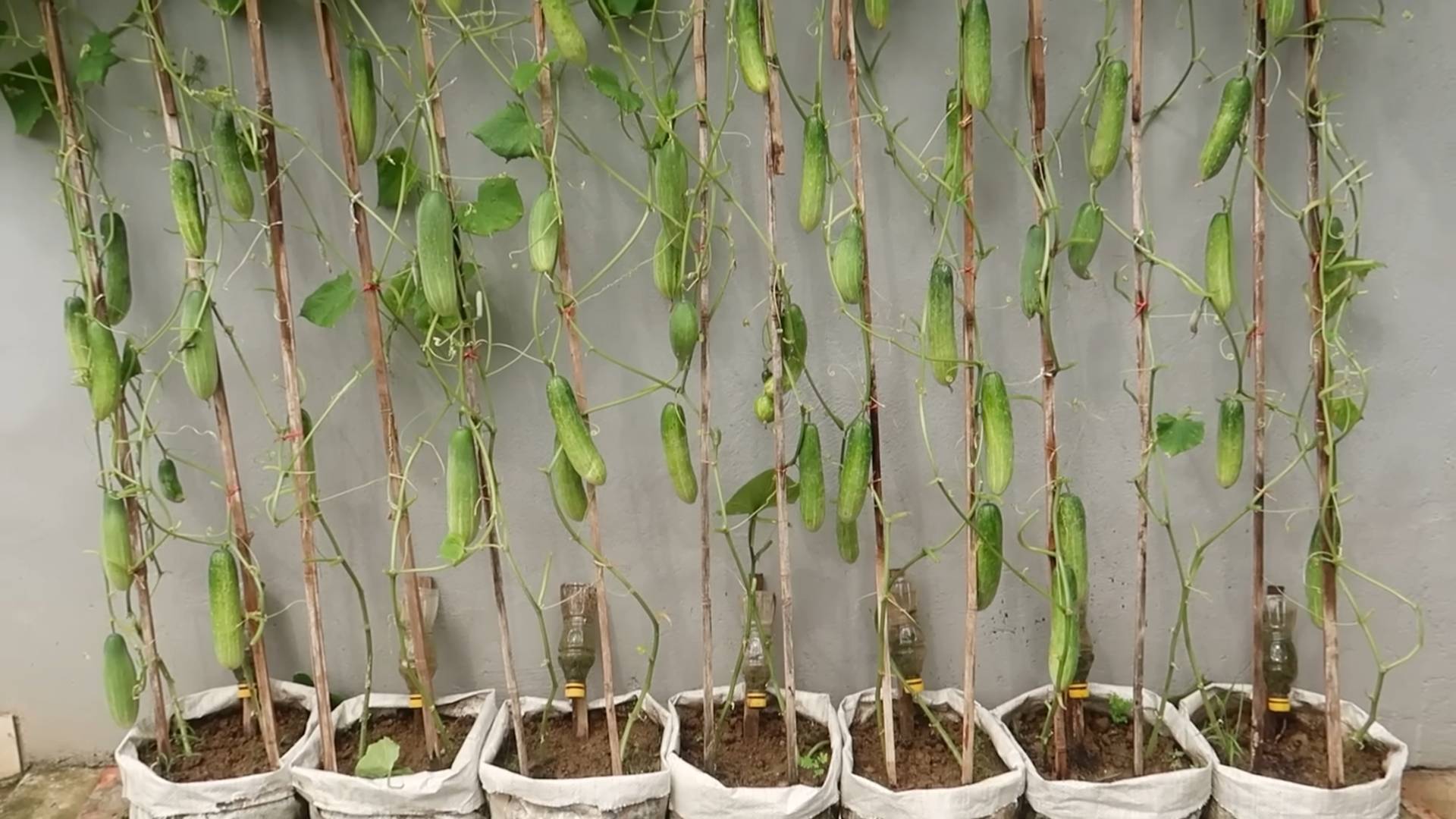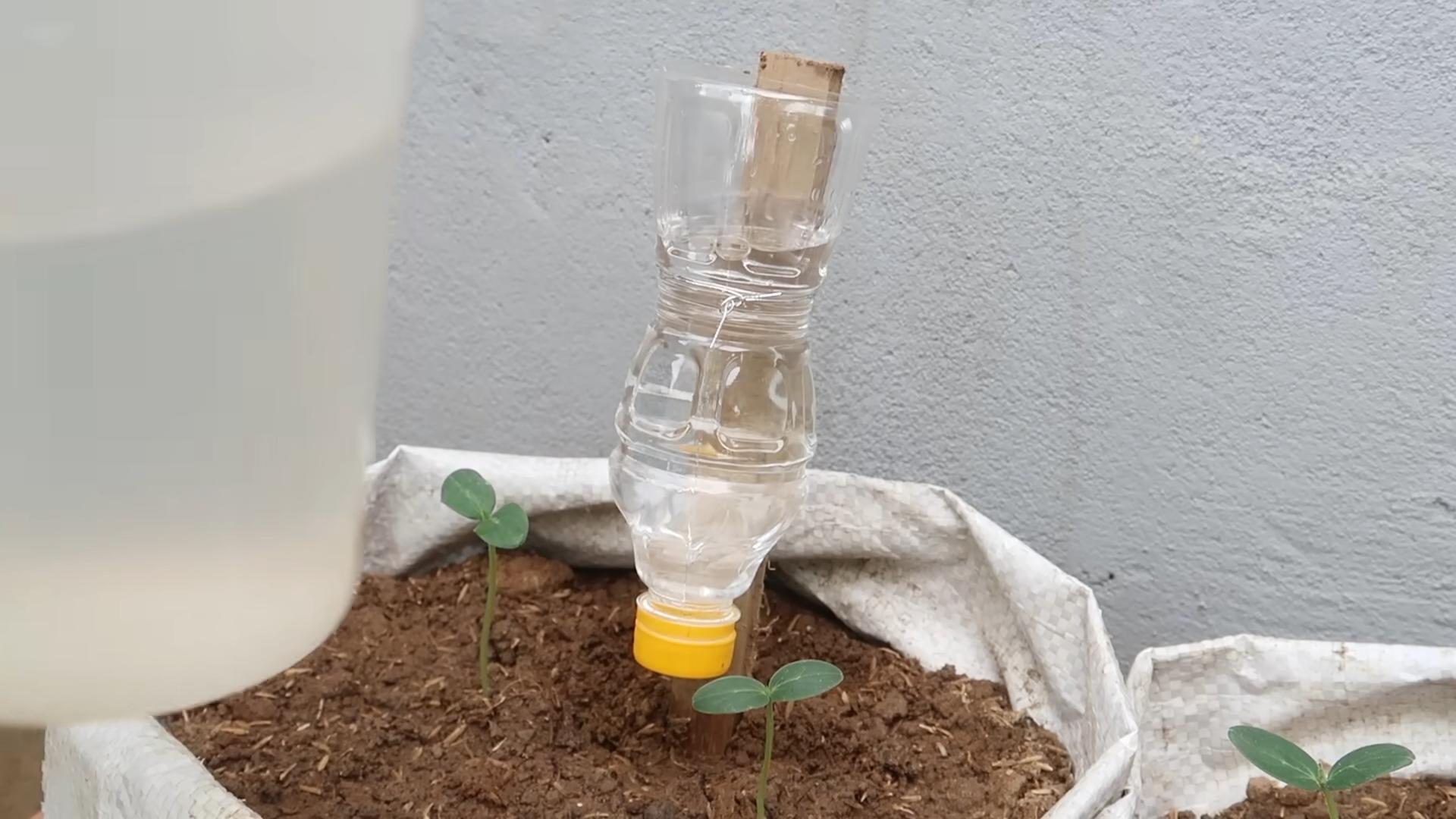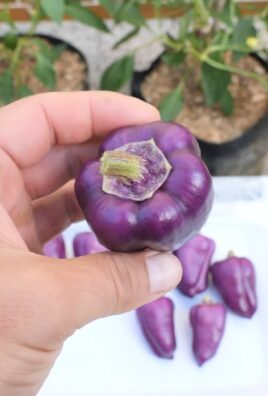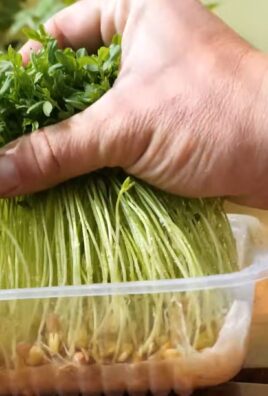Indoor cucumber growing might sound like a challenge reserved for seasoned gardeners, but trust me, it’s more achievable (and rewarding!) than you think! Imagine plucking fresh, crisp cucumbers right from your own indoor garden, even when the snow is falling outside. That’s the magic we’re unlocking today.
For centuries, humans have sought ways to extend the growing season and cultivate food in controlled environments. From ancient Roman greenhouses to the modern-day hydroponics systems, the desire to nurture life indoors has always been strong. While traditionally cucumbers thrived under the sun, advancements in technology and a deeper understanding of plant needs have made indoor cucumber growing a viable and increasingly popular option for home gardeners like you and me.
Why should you try growing cucumbers indoors? Well, for starters, it gives you complete control over the growing environment, shielding your precious plants from pests, diseases, and unpredictable weather. Plus, it allows you to enjoy fresh, homegrown cucumbers year-round, adding a burst of flavor to your salads, sandwiches, and snacks. In this article, I’m going to share some simple yet effective DIY tricks and hacks that will transform your home into a thriving cucumber oasis. Get ready to roll up your sleeves and embark on this exciting gardening adventure!

Growing Cucumbers Indoors: A Comprehensive DIY Guide
Hey there, fellow gardening enthusiasts! Ever dreamt of enjoying fresh, crisp cucumbers even when the weather outside is frightful? Well, dream no more! I’m going to walk you through the process of growing cucumbers indoors, step-by-step. It’s easier than you might think, and the reward of homegrown cucumbers in the middle of winter is absolutely worth it.
Choosing the Right Cucumber Variety
Not all cucumbers are created equal, especially when it comes to indoor growing. You’ll want to select varieties that are compact, self-pollinating, and disease-resistant. Here are a few of my favorites:
* Spacemaster: This is a bush-type cucumber that’s perfect for containers. It produces delicious, dark green cucumbers.
* Bush Champion: Another great bush variety, known for its high yield and disease resistance.
* Patio Snacker: As the name suggests, this variety is ideal for patios and small spaces. It produces small, snack-sized cucumbers.
* Little Leaf: A compact variety with smaller leaves, making it ideal for indoor growing.
Materials You’ll Need
Before we dive in, let’s gather all the necessary materials. Trust me, having everything ready beforehand will make the process much smoother.
* Cucumber Seeds: Choose your preferred variety from the list above.
* Large Containers: You’ll need pots that are at least 12 inches in diameter and 12 inches deep. Cucumbers have extensive root systems, so bigger is better.
* Potting Mix: Use a high-quality, well-draining potting mix. Avoid using garden soil, as it can compact and hinder drainage.
* Grow Lights: Cucumbers need plenty of light, especially indoors. Invest in a good set of grow lights. LED grow lights are energy-efficient and work wonders.
* Trellis or Stakes: Even bush varieties can benefit from some support. A small trellis or a few stakes will help keep the plants upright.
* Watering Can or Hose: For regular watering.
* Fertilizer: A balanced, water-soluble fertilizer formulated for vegetables.
* Spray Bottle: For misting the plants.
* Small Brush or Cotton Swab: For hand-pollinating (if needed).
Step-by-Step Instructions: Planting and Growing
Alright, let’s get our hands dirty! Here’s the detailed process of planting and growing cucumbers indoors:
1. Prepare the Containers: Fill your containers with the potting mix, leaving about an inch of space at the top. Gently pat down the soil.
2. Sow the Seeds: Plant the cucumber seeds about half an inch deep in the soil. I usually plant 2-3 seeds per container to increase the chances of germination.
3. Water Thoroughly: After planting, water the soil thoroughly until it’s evenly moist. Be careful not to overwater, as this can lead to seed rot.
4. Provide Warmth: Cucumber seeds germinate best in warm temperatures (around 70-80°F). You can use a heat mat to provide bottom heat and speed up germination.
5. Wait for Germination: It usually takes about 7-10 days for cucumber seeds to germinate. Keep the soil consistently moist during this time.
6. Thin the Seedlings: Once the seedlings emerge, thin them to one plant per container. Choose the strongest, healthiest-looking seedling and gently remove the others.
7. Position Under Grow Lights: Place the containers under your grow lights. The lights should be about 6-12 inches above the plants.
8. Adjust Lighting Schedule: Cucumbers need at least 6-8 hours of light per day. Set your grow lights on a timer to ensure consistent light exposure. I usually give mine 14-16 hours of light.
9. Water Regularly: Water the cucumber plants regularly, keeping the soil consistently moist but not waterlogged. Check the soil moisture by sticking your finger about an inch deep. If it feels dry, it’s time to water.
10. Fertilize Regularly: Start fertilizing the plants about two weeks after they emerge. Use a balanced, water-soluble fertilizer according to the package instructions. I usually fertilize every 2-3 weeks.
11. Provide Support: As the plants grow, provide them with support using a trellis or stakes. Gently tie the stems to the support as needed.
12. Monitor for Pests and Diseases: Keep an eye out for common pests like aphids, spider mites, and whiteflies. If you spot any pests, treat them with an insecticidal soap or neem oil. Also, watch for signs of diseases like powdery mildew. Ensure good air circulation to prevent fungal diseases.
13. Hand-Pollinate (If Necessary): Some indoor cucumber varieties are self-pollinating, but others may require hand-pollination. If you notice that your plants are producing flowers but not setting fruit, you may need to hand-pollinate. To do this, use a small brush or cotton swab to transfer pollen from the male flowers (those with a long, thin stem) to the female flowers (those with a small cucumber behind the flower).
14. Harvest the Cucumbers: Cucumbers are typically ready to harvest about 50-70 days after planting. Harvest them when they reach the desired size and color. Use a sharp knife or scissors to cut the cucumbers from the vine.
Troubleshooting Common Issues
Even with the best care, you might encounter some challenges along the way. Here are a few common issues and how to address them:
* Yellowing Leaves: This can be caused by overwatering, underwatering, nutrient deficiencies, or pests. Check the soil moisture, fertilize the plants, and inspect for pests.
* Lack of Fruit: This can be due to insufficient light, poor pollination, or nutrient deficiencies. Ensure adequate light exposure, hand-pollinate if necessary, and fertilize the plants.
* Powdery Mildew: This fungal disease appears as a white, powdery coating on the leaves. Improve air circulation, avoid overhead watering, and treat with a fungicide if necessary.
* Pests: Aphids, spider mites, and whiteflies can infest cucumber plants. Treat them with insecticidal soap or neem oil.
Tips for Success
Here are a few extra tips to help you succeed in growing cucumbers indoors:
* Maintain Consistent Temperatures: Cucumbers thrive in warm temperatures (around 70-80°F). Avoid exposing them to cold drafts or sudden temperature changes.
* Provide Good Air Circulation: Good air circulation helps prevent fungal diseases. Use a fan to circulate the air around the plants.
* Rotate the Plants: Rotate the plants regularly to ensure even light exposure.
* Prune the Plants: Prune the plants to remove any dead or yellowing leaves. This will help improve air circulation and prevent diseases.
* Be Patient: Growing cucumbers indoors takes time and patience. Don’t get discouraged if you don’t see results immediately. Just keep providing the plants with the care they need, and you’ll eventually be rewarded with delicious, homegrown cucumbers.
Harvesting and Enjoying Your Cucumbers
Once your cucumbers are ready to harvest, it’s time to enjoy the fruits (or vegetables!) of your labor. Harvest them when they reach the desired size and color. Use a sharp knife or scissors to cut the cucumbers from the vine.
Freshly harvested cucumbers are delicious in salads, sandwiches, and dips. You can also pickle them or use them to make refreshing cucumber water.
Growing cucumbers indoors is a rewarding experience that allows you to enjoy fresh, homegrown cucumbers year-round. With a little bit of care and attention, you can successfully grow cucumbers indoors and impress your friends and family with your gardening skills. Happy gardening!

Conclusion
So, there you have it! Growing cucumbers indoors might seem daunting at first, but with this simple DIY trick, you’re well on your way to enjoying fresh, crisp cucumbers straight from your home, regardless of the season. This method offers a fantastic alternative to relying solely on store-bought produce, giving you control over the growing process and ensuring you have access to healthy, delicious cucumbers whenever you crave them.
The beauty of this DIY approach lies in its adaptability. Feel free to experiment with different cucumber varieties to find your personal favorite. Bush varieties, like Spacemaster or Bush Champion, are particularly well-suited for indoor growing due to their compact size. You can also explore different container sizes and materials to optimize your growing space. Consider using self-watering containers to simplify watering and prevent over or under-watering.
Beyond the basic setup, you can enhance your indoor cucumber garden with companion plants. Basil, marigolds, and nasturtiums are known to deter pests and attract beneficial insects, creating a healthier and more productive environment for your cucumbers. Adding a small fan to your growing area can also improve air circulation, reducing the risk of fungal diseases.
Remember, patience is key. It takes time for cucumber plants to mature and produce fruit. Consistent watering, proper fertilization, and adequate sunlight are essential for success. Don’t be discouraged if you encounter challenges along the way. Every growing experience is a learning opportunity.
This DIY indoor cucumber growing method is a must-try because it empowers you to cultivate your own fresh produce, promotes sustainable living, and provides a rewarding connection to nature. It’s a fantastic project for gardeners of all skill levels, from beginners to experienced growers.
We encourage you to give this DIY trick a try and share your experiences with us! Let us know what cucumber varieties you’re growing, what challenges you’ve overcome, and what tips you’ve discovered along the way. Your feedback will help us refine this method and inspire others to embark on their own indoor cucumber growing adventures. Share your photos and stories in the comments section below – we can’t wait to see your thriving indoor cucumber gardens!
Frequently Asked Questions (FAQ)
What are the best cucumber varieties for indoor growing?
While you can technically grow any cucumber variety indoors, some are better suited than others. Bush or compact varieties are generally recommended because they require less space and are easier to manage. Some excellent choices include:
* Spacemaster: A popular bush variety known for its high yield and disease resistance.
* Bush Champion: Another compact variety that produces flavorful cucumbers.
* Patio Snacker: A small, prolific variety perfect for containers.
* Salad Bush: A compact variety that produces crisp, mild-flavored cucumbers.
* Little Leaf: A unique variety with small leaves and abundant fruit production.
When selecting a variety, consider the size of your growing space and your personal preferences for taste and texture.
How much sunlight do indoor cucumbers need?
Cucumbers require at least 6-8 hours of direct sunlight per day to thrive. If you don’t have a sunny window, you’ll need to supplement with artificial lighting. Grow lights, such as LED grow lights or fluorescent grow lights, can provide the necessary light spectrum for healthy growth and fruit production. Position the grow lights about 6-12 inches above the plants and adjust as they grow.
What type of soil should I use for indoor cucumbers?
Use a well-draining potting mix that is rich in organic matter. Avoid using garden soil, as it can be too heavy and compact for container gardening. A good potting mix should contain ingredients like peat moss, perlite, vermiculite, and compost. You can also add slow-release fertilizer to the potting mix to provide essential nutrients.
How often should I water my indoor cucumber plants?
Water your cucumber plants regularly, keeping the soil consistently moist but not waterlogged. Check the soil moisture level daily by sticking your finger about an inch into the soil. If the soil feels dry, it’s time to water. Water deeply, allowing the water to drain out of the bottom of the container. Avoid overhead watering, as this can increase the risk of fungal diseases.
How do I pollinate my indoor cucumber plants?
Cucumbers are typically pollinated by bees, but since you’re growing them indoors, you’ll need to hand-pollinate them. Use a small paintbrush or cotton swab to transfer pollen from the male flowers to the female flowers. Male flowers have a long, thin stem, while female flowers have a small cucumber-like structure behind the flower. Pollinate the flowers in the morning, when the pollen is most viable.
What are common pests and diseases that affect indoor cucumbers?
Common pests that can affect indoor cucumbers include aphids, spider mites, and whiteflies. Regularly inspect your plants for signs of infestation and take action promptly. You can use insecticidal soap, neem oil, or horticultural oil to control these pests. Common diseases include powdery mildew and fungal leaf spots. Ensure good air circulation and avoid overhead watering to prevent these diseases. You can also use fungicides if necessary.
How do I fertilize my indoor cucumber plants?
Cucumbers are heavy feeders and require regular fertilization. Use a balanced fertilizer with a ratio of 10-10-10 or 20-20-20. Fertilize every 2-3 weeks, following the instructions on the fertilizer label. You can also use organic fertilizers, such as compost tea or fish emulsion.
How long does it take for cucumbers to grow indoors?
The time it takes for cucumbers to grow indoors depends on the variety and growing conditions. Generally, it takes about 50-70 days from planting to harvest. You can start harvesting cucumbers when they reach the desired size and color.
Can I grow cucumbers indoors year-round?
Yes, you can grow cucumbers indoors year-round as long as you provide them with adequate light, water, and nutrients. You may need to adjust your growing practices depending on the season. For example, you may need to use grow lights more during the winter months.
What if my cucumber plant is producing flowers but no fruit?
This is likely due to a pollination issue. Make sure you are hand-pollinating your plants regularly. Also, ensure that your plants are receiving enough light and nutrients. Stressful conditions can also affect fruit production.
How do I know when my cucumbers are ready to harvest?
Cucumbers are typically ready to harvest when they are firm, green, and reach the desired size for the variety. Check the seed packet or plant tag for specific information on the expected size and color of the cucumbers. Harvest regularly to encourage continued fruit production.




Leave a Comment